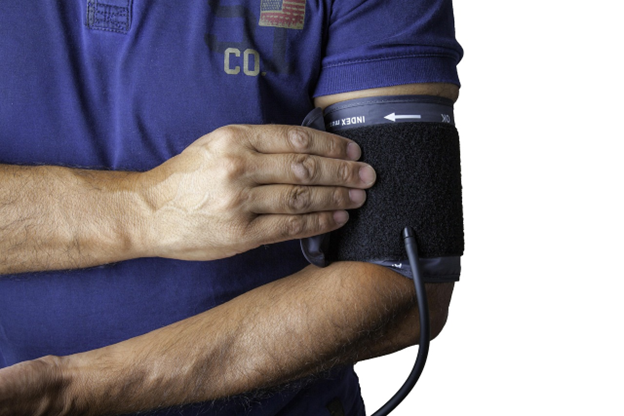Continuous blood pressure monitoring helps track changes all day. Old methods give one reading and may miss problems. Wearable devices check blood pressure anytime. They show how stress, sleep, and activity affect health. Doctors use this data for better treatment. Smartwatches and fitness bands make tracking easy. Users get alerts for sudden changes. Early signs of high blood pressure are easier to catch. Regular tracking helps prevent serious heart problems. As technology improves, these devices will become more accurate. Better monitoring means better health for everyone.
What is Continuous BP Monitoring?
Continuous blood pressure monitoring means keeping track of your blood pressure all day and night, even while you sleep. This method helps spot changes in blood pressure due to daily activities or stress. Here’s what makes it valuable:
- Detects Changes Quickly: It finds important changes that occasional checks might miss.
- Gives Full Data: Provides a complete view of blood pressure trends, aiding in better care.
- Supports Timely Action: Helps adjust treatments or habits swiftly to manage blood pressure better.
Types of Continuous BP Monitor
Continuous BP monitoring means keeping track of your blood pressure all day with a special watch. Here’s how different types of continuous blood pressure monitoring devices do it:
- Ambulatory Blood Pressure Monitoring: These watches check your blood pressure at different times during the day. They help you see how your blood pressure changes when you move, eat, sleep, or rest.
- Smartwatch Integrations: Some regular watches can also check your blood pressure. They mix being a watch and a health tracker.
- Pulse Wave Velocity (PWV) Monitors: These watches measure how fast your blood moves through your veins to guess your blood pressure. Fast blood movement can mean higher pressure.
- Pulse Transit Time (PTT) Monitors: These watches find out how long it takes for your blood to travel from one spot to another in your body to tell your blood pressure.
- Cuffless Blood Pressure Monitors: These watches check your blood pressure without squeezing your arm. They are comfy and easy to wear all the time.
Mechanism of 24-Hour BP Tracking Devices
24-hour wearable BP monitors provide a detailed look at your blood pressure throughout the day and night. Here’s a simple breakdown of how these devices work for hypertension and detecting its risks:
- Sensor Placement: Monitors use sensors placed on the wrist, arm, or finger. These sensors detect blood flow and pressure in the arteries.
- Data Collection: As you move, rest, or sleep, the device continuously gathers data on your blood pressure and heart rate.
- Analysis: The monitor calculates blood pressure by analysing changes in the pulse waves or the time it takes for blood to travel between two points in the body.
- Display and Storage: The readings are displayed in real time and stored in the device. You can view trends over time to understand how your activities and rest affect your blood pressure.
- Transmission: Some monitors can send this data wirelessly to a smartphone app or your doctor’s office, making it easy to track your health and make necessary adjustments to your treatment plan.
Benefits of Continuous BP Monitoring
Continuous blood pressure (BP) monitoring is a game changer in managing hypertension and enhancing heart health. Here’s how it makes a difference:
- It finds true blood pressure: Continuous monitoring helps spot real blood pressure levels. It shows us the difference between normal daily levels and higher levels that might only appear during doctor visits. This helps in getting the right treatment.
- It checks your blood pressure at night: This kind of monitoring keeps an eye on your blood pressure while you sleep. Nighttime readings can catch blood pressure issues that only show up then.
- It helps doctors make better decisions: When doctors see what your blood pressure does all day, they can choose the best treatments for you.
- It checks if your medicine is working: Continuous monitoring can show whether your blood pressure medicine is working all through the day and night.
- It helps prevent bigger health problems: Keeping an eye on blood pressure changes helps stop serious heart problems before they start.
- You Learn More: Seeing your blood pressure change helps you understand how things like exercise, food, and medicine make a difference.
Challenges and Future Possibilities
Tracking blood pressure all day helps spot health problems early. However, there are still some issues that need to be fixed.
Challenges
- Accuracy Problems – Movement can cause incorrect readings. Devices must get better at adjusting for this.
- Uncomfortable to Wear – Some devices feel tight or heavy. Future designs should be light and easy to wear.
- Battery Life – Many watches need charging often, making 24/7 tracking hard. Devices need longer-lasting power.
- Too Expensive – Many smart BP monitors cost a lot. Cheaper options will help more people use them.
- Data Privacy – Health data can be stolen or misused. Stronger security is needed to keep it safe.
Future Possibilities
- Smarter Sensors – AI will improve tracking and give better results.
- More Comfortable Designs – New materials will make devices smaller and lighter.
- Better Batteries – Solar power and new battery tech will help devices last longer.
- Affordable Choices – More brands will create budget-friendly BP monitors.
- Stronger Security – Future devices will have better encryption to keep health data safe.
Conclusion
Doctors can now track blood pressure all day with smart devices. 24-hour blood pressure tracking helps find hidden risks and improves treatment. It gives real-time data, making care more accurate. These devices are easy to wear and provide better results than traditional methods. However, battery life and high costs are still concerns. Future models will be smaller, smarter, and more affordable. As technology improves, managing blood pressure will become simpler for everyone. Continuous monitoring is no longer just an option—it is the key to better heart health.
Note: It is crucial to understand that there are bound to be natural elevations and spikes in blood pressure throughout the day. This is an inherent tendency of the human body that is triggered by both environmental and internal aspects. When opting for continuous BP monitoring, the key is to look to sustained elevated levels as this is the core cause for concern, and not periodic spikes.
Disclaimer
The information contained in this article is to educate, spread awareness in relation to hypertension and other diseases to the public at large. The contents of this article are created and developed by BPinControl.in through its authors, which has necessary, authorisations, license, approvals, permits etc to allow usage of this articles on The Website. The views and opinions expressed in this article are views, opinions of the respective authors and are independently endorsed by doctors. Although great care has been taken in compiling and checking the information in this article, The Website shall not be responsible, or in any way liable for any errors, omissions or inaccuracies in this article whether arising from negligence or otherwise, or for any consequences arising therefrom. The content of this article is not a substitute for any medical advice. The Website shall not be held responsible or liable for any consequence arising out of reliance on the information provided in the article.




